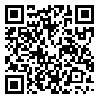Sun, Dec 14, 2025
[Archive]
Volume 37, Issue 1 (2-2023)
Med J Islam Repub Iran 2023 |
Back to browse issues page
Download citation:
BibTeX | RIS | EndNote | Medlars | ProCite | Reference Manager | RefWorks
Send citation to:



BibTeX | RIS | EndNote | Medlars | ProCite | Reference Manager | RefWorks
Send citation to:
Hedayati M, Masoudi Asl I, Maleki M R, Fazaeli A A, Goharinezhad S. The Variations in Catastrophic and Impoverishing Health Expenditures, and Its Determinants in Iran: A Scoping Review. Med J Islam Repub Iran 2023; 37 (1) :347-382
URL: http://mjiri.iums.ac.ir/article-1-8197-en.html
URL: http://mjiri.iums.ac.ir/article-1-8197-en.html
Maryam Hedayati 

 , Iravan Masoudi Asl
, Iravan Masoudi Asl 

 , Mohammad Reza Maleki
, Mohammad Reza Maleki 

 , Ali Akbar Fazaeli
, Ali Akbar Fazaeli 

 , Salime Goharinezhad
, Salime Goharinezhad 




 , Iravan Masoudi Asl
, Iravan Masoudi Asl 

 , Mohammad Reza Maleki
, Mohammad Reza Maleki 

 , Ali Akbar Fazaeli
, Ali Akbar Fazaeli 

 , Salime Goharinezhad
, Salime Goharinezhad 


Department of Health Service Management, School of Health Management and Information Sciences, Iran University of Medical Sciences, Tehran, Iran , Masoudiasl.i@iums.ac.ir
Abstract: (2168 Views)
Background: The high reliance on out-of-pocket (OOP) payments for health financing in Iran have been led to different inequity problems such as catastrophic health expenditure (CHE) and impoverishment. This scoping review has been conducted to understand the variations in CHE and impoverishment, the underlying determinants of CHE, and its inequality in the past 20 years.
Methods: This scoping review is guided by Arksey and O’Malley’s scoping review framework. systematically PubMed, Scopus, Web of Science, ProQuest, Scientific Information Database, IranMedex, IranDoc, Magiran Science, Google Scholar, and grey literature were searched systematically from 1 January 2000 to August 2021. We included studies that reported the rate of CHE, impoverishment, inequality, and its influencing factors. Simple descriptive statistics and narrative synthesis were used to present the review findings.
Results: From 112 included articles, the average incidence of CHE was 3.19% at the 40% threshold, and about 3.21% of the households had impoverished. We found an unfavorable status of health inequality indices, including the average of fair financial contribution (0.833), concentration (-0.01), Gini coefficient (0.42), and Kakwani (-0.149). The most widely applied key drivers influencing the rate of CHE in these studies were household economic status, place of residence, health insurance status, household size, head of the household’s gender, education level and employment status, having a household member under 5/ above 60 years old, with chronic diseases (in particular cancer and dialysis), disability, using inpatient and outpatient and dentistry services, medicines and equipment, and low insurance coverage.
Conclusion: The result of this review calls for intensifying health policies and financing structures in Iran to provide more equitable access to all populations, especially the poorest and vulnerable. Moreover, the government is expected to adopt effective measures in inpatient and outpatient care, dental services, medicines, and equipment.
Methods: This scoping review is guided by Arksey and O’Malley’s scoping review framework. systematically PubMed, Scopus, Web of Science, ProQuest, Scientific Information Database, IranMedex, IranDoc, Magiran Science, Google Scholar, and grey literature were searched systematically from 1 January 2000 to August 2021. We included studies that reported the rate of CHE, impoverishment, inequality, and its influencing factors. Simple descriptive statistics and narrative synthesis were used to present the review findings.
Results: From 112 included articles, the average incidence of CHE was 3.19% at the 40% threshold, and about 3.21% of the households had impoverished. We found an unfavorable status of health inequality indices, including the average of fair financial contribution (0.833), concentration (-0.01), Gini coefficient (0.42), and Kakwani (-0.149). The most widely applied key drivers influencing the rate of CHE in these studies were household economic status, place of residence, health insurance status, household size, head of the household’s gender, education level and employment status, having a household member under 5/ above 60 years old, with chronic diseases (in particular cancer and dialysis), disability, using inpatient and outpatient and dentistry services, medicines and equipment, and low insurance coverage.
Conclusion: The result of this review calls for intensifying health policies and financing structures in Iran to provide more equitable access to all populations, especially the poorest and vulnerable. Moreover, the government is expected to adopt effective measures in inpatient and outpatient care, dental services, medicines, and equipment.
Type of Study: Review Article |
Subject:
Health Management and Information Sciences
Send email to the article author
| Rights and permissions | |
 |
This work is licensed under a Creative Commons Attribution-NonCommercial 4.0 International License. |





